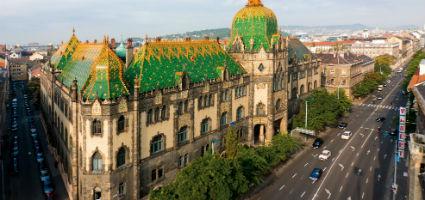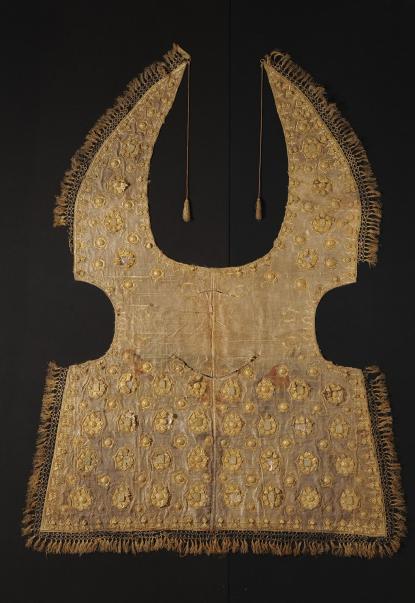2024. April 25. Thursday
Museum of Applied Arts - Budapest
 |
Address: 1091, Budapest Üllői út 33-37.
Phone number: (1) 456-5100
E-mail: info@imm.hu
Opening hours: A múzeum egész évben zárva tart.
|
The exhibition has closed for visitors.
2010.12.21. - 2012.01.22.
In addition to noble clothing and homewear, a number of harnesses and horse covers are on display, among them the 'jancsik' for which the cloth was interwoven with silver and hundreds of ruby stones.

Harnesses played special role in the treasuries of the noble in the 16-17th century. The number of horses, the quality and quantity of the harness represented the rank and wealth of the owner. The items ornamented with gemstones, pearls, or gilded silver plates, covered with velvet were stored in leather cases or chests and were only taken out on special occasions. The Ottoman saddles, horse covers, arch quivers considered valuable by European and Hungarian collections. The Esterházy treasury mostly acquired Ottoman harnesses in diplomatic route, as wartime capture, ransom. However, some items from former years were part of the Esterházy wives marriage portion.
The name used for the sables in Hungarian is 'cafrag'. The square-shaped 'cafrags' that were ornamented with embroidery and fringes were laid in the bottom of horses. The so-called 'hard embroidery' was made with gold or silver wire by men who used a special stitch that had the precious metal running only on the surface but not on the back of the cloth. The most expensive of these had gold or silver thread on the whole surface of the cloth.
One of the horse covers in the treasury are in the shape of horse armours, the other is a luxury item, with silver embroidered silk and ruby stones. The rich weapon collection of the old treasury is now represented by some ornamental weapons, cases and six ottoman arches.
In addition to the 70 harnesses, we also present the fascinating wardrobe of the Esterházy family, as well as homewear such as carpets, curtains etc. Through the Esterházy textile collection, the visitors are acquainted with masterpieces by foreign artists and the lifestyle of Hungarian noble families like the Thurzó, Thököly, Báthory, Kéry, Lorántffy, Oláh.

Harnesses played special role in the treasuries of the noble in the 16-17th century. The number of horses, the quality and quantity of the harness represented the rank and wealth of the owner. The items ornamented with gemstones, pearls, or gilded silver plates, covered with velvet were stored in leather cases or chests and were only taken out on special occasions. The Ottoman saddles, horse covers, arch quivers considered valuable by European and Hungarian collections. The Esterházy treasury mostly acquired Ottoman harnesses in diplomatic route, as wartime capture, ransom. However, some items from former years were part of the Esterházy wives marriage portion.
The name used for the sables in Hungarian is 'cafrag'. The square-shaped 'cafrags' that were ornamented with embroidery and fringes were laid in the bottom of horses. The so-called 'hard embroidery' was made with gold or silver wire by men who used a special stitch that had the precious metal running only on the surface but not on the back of the cloth. The most expensive of these had gold or silver thread on the whole surface of the cloth.
One of the horse covers in the treasury are in the shape of horse armours, the other is a luxury item, with silver embroidered silk and ruby stones. The rich weapon collection of the old treasury is now represented by some ornamental weapons, cases and six ottoman arches.
In addition to the 70 harnesses, we also present the fascinating wardrobe of the Esterházy family, as well as homewear such as carpets, curtains etc. Through the Esterházy textile collection, the visitors are acquainted with masterpieces by foreign artists and the lifestyle of Hungarian noble families like the Thurzó, Thököly, Báthory, Kéry, Lorántffy, Oláh.
